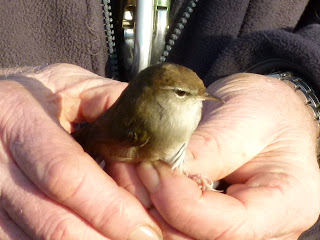
Have finally got together all the data on our Pied Flycatcher Retrapping Adults for Survival study in 13 woods in the Lune valley.
This year we had 92 nest boxes occupied. This compares with only 63 in 2010 and 54 in 2009. Most of the increase has come from the peripheral woods which have had nest boxes for several years. In two of these woods the population increased from just four pairs in 2009/10 to 11 this year. Of the 92 occupied boxes 76 were successful. In total we ringed 455 nestlings.
A total of 71 females and 19 males were caught. Three of these males were proved to be polygamous with the two boxes serviced being approximately 50, 75 and 100 metres apart.
Birds ringed as adults mainly returned to nest in the same wood in successive years. Out of 21 only 2 changed woods. But of 31 birds breeding for the first time only seven nested in the wood in which they were hatched the others moved to other woods. Birds ringed as nestlings in Durham and Derbyshire were found nesting in our boxes.
John
